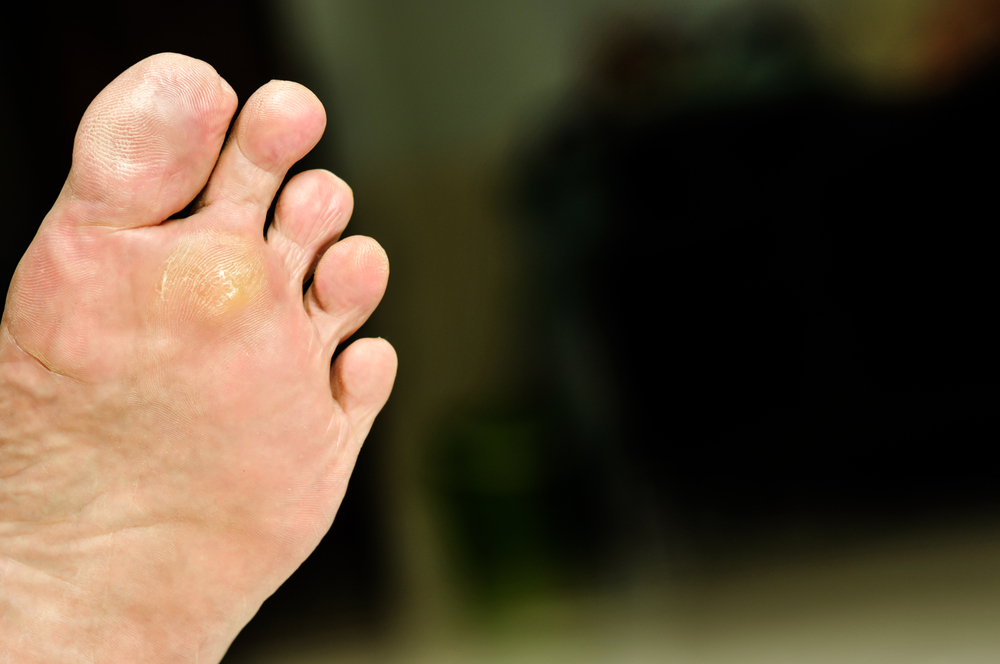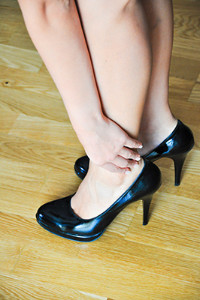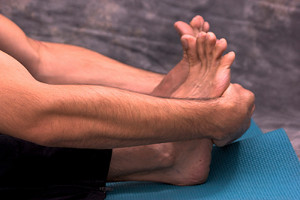Connect With Us
Blog
Items filtered by date: February 2018
A Diabetic’s Guide to Proper Foot Care
 Foot problems may become more severe if you are a diabetic, and additional care must be taken to avoid complications. There are several techniques that can be practiced for optimum foot care, including checking the feet daily for any cuts or redness, cutting the toenails correctly, and washing and drying thoroughly between the toes. If the skin becomes hardened, you may consider applying a moisturizer on the top and bottom of the feet which will promote softer skin. Choosing to wear shoes that fit well will not only feel comfortable, but will be beneficial in avoiding conditions that may lead to sores and infections. When buying shoes, it’s important to make sure the toes have adequate room to move around, and choosing a shoe with a lower heel may be helpful to avoid falling. It is of vital importance that daily foot inspections be carried out. Any type of wound, especially one that is not healing, must be addressed with immediate attention. A consultation with a podiatrist is advised to learn about the importance of proper diabetic foot care.
Foot problems may become more severe if you are a diabetic, and additional care must be taken to avoid complications. There are several techniques that can be practiced for optimum foot care, including checking the feet daily for any cuts or redness, cutting the toenails correctly, and washing and drying thoroughly between the toes. If the skin becomes hardened, you may consider applying a moisturizer on the top and bottom of the feet which will promote softer skin. Choosing to wear shoes that fit well will not only feel comfortable, but will be beneficial in avoiding conditions that may lead to sores and infections. When buying shoes, it’s important to make sure the toes have adequate room to move around, and choosing a shoe with a lower heel may be helpful to avoid falling. It is of vital importance that daily foot inspections be carried out. Any type of wound, especially one that is not healing, must be addressed with immediate attention. A consultation with a podiatrist is advised to learn about the importance of proper diabetic foot care.
Diabetic foot care is important in preventing foot ailments such as ulcers. If you are suffering from diabetes or have any other concerns about your feet, contact Raul Hidalgo DPM from South Texas Foot & Ankle Care. Our doctor can provide the care you need to keep you pain-free and on your feet.
Diabetic Foot Care
Diabetes affects millions of people every year. The condition can damage blood vessels in many parts of the body, especially the feet. Because of this, taking care of your feet is essential if you have diabetes, and having a podiatrist help monitor your foot health is highly recommended.
The Importance of Caring for Your Feet
- Routinely inspect your feet for bruises or sores.
- Wear socks that fit your feet comfortably.
- Wear comfortable shoes that provide adequate support.
Patients with diabetes should have their doctor monitor their blood levels, as blood sugar levels play such a huge role in diabetic care. Monitoring these levels on a regular basis is highly advised.
It is always best to inform your healthcare professional of any concerns you may have regarding your feet, especially for diabetic patients. Early treatment and routine foot examinations are keys to maintaining proper health, especially because severe complications can arise if proper treatment is not applied.
If you have any questions please feel free to contact our office located in San Antonio, TX . We offer the newest diagnostic and treatment technologies for all your foot and ankle needs.
What Causes Plantar Warts?
 A plantar wart is caused by one of many types of a very common virus. It appears as a thick, callused spot on the sole of the foot and may vary in size, ranging from small to possibly covering most of the sole. The human papillomavirus (HPV) that causes plantar warts is known to be contagious and can also spread to other parts of the body. Although anyone is susceptible to this virus, it’s most prevalent in teenagers or those individuals with weakened immune systems. Many of these warts will disappear on their own, making it unnecessary to treat this condition. However, if the wart becomes painful and interferes with daily activities, there are various treatments available. A consultation with a podiatrist is suggested to learn about effective methods designed for the removal of plantar warts.
A plantar wart is caused by one of many types of a very common virus. It appears as a thick, callused spot on the sole of the foot and may vary in size, ranging from small to possibly covering most of the sole. The human papillomavirus (HPV) that causes plantar warts is known to be contagious and can also spread to other parts of the body. Although anyone is susceptible to this virus, it’s most prevalent in teenagers or those individuals with weakened immune systems. Many of these warts will disappear on their own, making it unnecessary to treat this condition. However, if the wart becomes painful and interferes with daily activities, there are various treatments available. A consultation with a podiatrist is suggested to learn about effective methods designed for the removal of plantar warts.
Plantar warts can be very uncomfortable. If you need your feet checked, contact Raul Hidalgo DPM from South Texas Foot & Ankle Care. Our doctor will assist you with all of your foot and ankle needs.
About Plantar Warts
Plantar warts are the result of HPV, or human papillomavirus, getting into open wounds on the feet. They are mostly found on the heels or balls of the feet.
While plantar warts are generally harmless, those experiencing excessive pain or those suffering from diabetes or a compromised immune system require immediate medical care. Plantar warts are easily diagnosed, usually through scraping off a bit of rough skin or by getting a biopsy.
Symptoms
- Lesions on the bottom of your feet, usually rough and grainy
- Hard or thick callused spots
- Wart seeds, which are small clotted blood vessels that look like little black spots
- Pain, discomfort, or tenderness of your feet when walking or standing
Treatment
- Freezing
- Electric tool removal
- Laser Treatment
- Topical Creams (prescription only)
- Over-the-counter medications
To help prevent developing plantar warts, avoid walking barefoot over abrasive surfaces that can cause cuts or wounds for HPV to get into. Avoiding direct contact with other warts, as well as not picking or rubbing existing warts, can help prevent the further spread of plantar warts. However, if you think you have developed plantar warts, speak to your podiatrist. He or she can diagnose the warts on your feet and recommend the appropriate treatment options.
If you have any questions please feel free to contact our office located in San Antonio, TX . We offer the newest diagnostic and treatment technologies for all your foot and ankle needs.
Wounds That Don't Heal Need to Be Checked
Stretching the Feet for Overall Health Benefits
Implementing foot stretches in your daily routine will not only benefit the health of the foot, but also feel good. There are numerous muscles in the foot, and practicing proper stretches can aid in helping the body stay fit. Pointing and flexing your toes is an effective foot stretch, in addition to practicing a tendon stretch. This is accomplished by standing on a step with the heels slightly hanging off the edge. When your weight is shifted towards your heels, a gentle stretch is easily felt and the flexibility of your tendons and muscles is improved. Another effective stretch is done while in a sitting position and involves placing a towel under the arch of the foot. Raise and straighten the leg, and gently pull the foot toward you. This not only stretches the foot, but allows the leg to become stronger as well. While general exercise is vital for everyday health, it’s important to stretch the feet for maximum health benefits.
Stretching the feet is a great way to prevent injuries. If you have any concerns with your feet consult with Raul Hidalgo DPM from South Texas Foot & Ankle Care. Our doctor will assess your condition and provide you with quality foot and ankle treatment.
Stretching the Feet
Being the backbone of the body, the feet carry your entire weight and can easily become overexerted, causing cramps and pain. As with any body part, stretching your feet can serve many benefits. From increasing flexibility to even providing some pain relief, be sure to give your feet a stretch from time to time. This is especially important for athletes or anyone performing aerobic exercises, but anyone experiencing foot pain or is on their feet constantly should also engage in this practice.
Great ways to stretch your feet:
- Crossing one leg over the others and carefully pull your toes back. Do 10-20 repetitions and repeat the process for each foot
- Face a wall with your arms out and hands flat against the wall. Step back with one foot and keep it flat on the floor while moving the other leg forward. Lean towards the wall until you feel a stretch. Hold for 30 seconds and perform 10 repetitions for each foot
- Be sure not to overextend or push your limbs too hard or you could risk pulling or straining your muscle
Individuals who tend to their feet by regular stretching every day should be able to minimize foot pain and prevent new problems from arising.
If you have any questions, please feel free to contact our office located in San Antonio, TX . We offer the newest diagnostic and treatment technologies for all your foot care needs.
It's Time for Beautiful Feet
How Can Wearing High Heels Affect My Feet?
 The choice to wear high heels can not only be damaging to the heel, but generally puts pressure on the front of the foot as well. Another part of the foot typically affected may be the Achilles tendon. When high heels are worn frequently, the tendon becomes shortened, and the back of the ankle may feel tight as it strains to be flexible. Arthritis may be a result of damage incurred to the joints of the feet from wearing high heels. Additionally, disorders such as bunions, corns, and a thickening of the nerves between the toes, referred to as Morton’s neuroma, may also be the result of choosing this type of shoe to wear. If you do decide to wear high heels, you can reduce the impact that’s endured by placing protective pads in the shoes. When proper stretches are performed, the foot and ankle will not only feel better, but become stronger.
The choice to wear high heels can not only be damaging to the heel, but generally puts pressure on the front of the foot as well. Another part of the foot typically affected may be the Achilles tendon. When high heels are worn frequently, the tendon becomes shortened, and the back of the ankle may feel tight as it strains to be flexible. Arthritis may be a result of damage incurred to the joints of the feet from wearing high heels. Additionally, disorders such as bunions, corns, and a thickening of the nerves between the toes, referred to as Morton’s neuroma, may also be the result of choosing this type of shoe to wear. If you do decide to wear high heels, you can reduce the impact that’s endured by placing protective pads in the shoes. When proper stretches are performed, the foot and ankle will not only feel better, but become stronger.
High heels have a history of causing foot and ankle problems. If you have any concerns about your feet or ankles, contact Raul Hidalgo DPM from South Texas Foot & Ankle Care. Our doctor can provide the care you need to keep you pain-free and on your feet.
Effects of High Heels on the Feet
High heels are popular shoes among women because of their many styles and societal appeal. Despite this, high heels can still cause many health problems if worn too frequently.
Which Parts of My Body Will Be Affected by High Heels?
- Ankle Joints
- Achilles Tendon – May shorten and stiffen with prolonged wear
- Balls of the Feet
- Knees – Heels cause the knees to bend constantly, creating stress on them
- Back – They decrease the spine’s ability to absorb shock, which may lead to back pain. The vertebrae of the lower back may compress.
What Kinds of Foot Problems Can Develop from Wearing High Heels?
- Corns
- Calluses
- Hammertoe
- Bunions
- Morton’s Neuroma
- Plantar Fasciitis
How Can I Still Wear High Heels and Maintain Foot Health?
If you want to wear high heeled shoes, make sure that you are not wearing them every day, as this will help prevent long term physical problems. Try wearing thicker heels as opposed to stilettos to distribute weight more evenly across the feet. Always make sure you are wearing the proper shoes for the right occasion, such as sneakers for exercising. If you walk to work, try carrying your heels with you and changing into them once you arrive at work. Adding inserts to your heels can help cushion your feet and absorb shock. Full foot inserts or metatarsal pads are available.
If you have any questions please feel free to contact our office located in San Antonio, TX . We offer the newest diagnostic and treatment technologies for all your foot and ankle needs.
Heel Pain Can Be Treated!
Blog Archives
- March 2025
- February 2025
- January 2025
- December 2024
- November 2024
- October 2024
- September 2024
- August 2024
- July 2024
- June 2024
- May 2024
- April 2024
- March 2024
- February 2024
- January 2024
- December 2023
- November 2023
- October 2023
- April 2022
- March 2022
- February 2022
- January 2022
- December 2021
- November 2021
- October 2021
- September 2021
- August 2021
- July 2021
- June 2021
- May 2021
- April 2021
- March 2021
- December 2018
- November 2018
- October 2018
- September 2018
- August 2018
- July 2018
- June 2018
- May 2018
- April 2018
- March 2018
- February 2018
- January 2018
- December 2017
- November 2017
- October 2017





